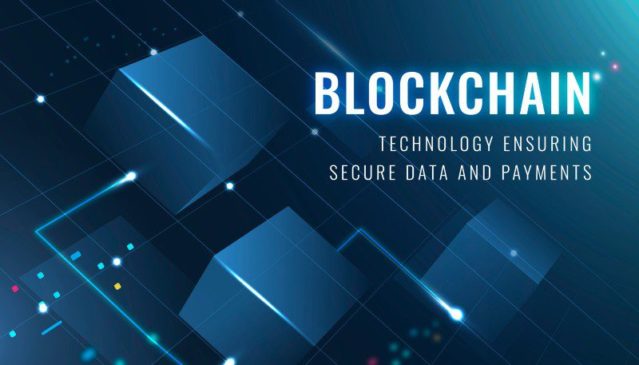Have you ever wondered how Bitcoin and other cryptocurrencies work? The answer lies in blockchain technology. Blockchain is a distributed database that allows for secure, transparent and tamper-proof transactions. In this beginner’s guide to blockchain, we will cover what blockchain is, how it works, and some of its potential applications. We will also provide tips on how to get started with blockchain.
What is Blockchain?
A blockchain is a digital ledger of all cryptocurrency transactions. It is constantly growing as new blocks are added to it, each containing a cryptographic hash of the previous block, a timestamp, and transaction data. Bitcoin nodes use the block chain to differentiate legitimate Bitcoin transactions from attempts to re-spend coins that have already been spent elsewhere. The blockchain is seen as the main technological innovation of Bitcoin, since it stands as proof of all the transactions on the network.
A blockchain is composed of blocks that hold timestamped batches of valid transactions. Each block includes the hash of the prior block in the blockchain, linking the two. The linked blocks form a chain. The entire Bitcoin network relies on the blockchain. Transactions made in bitcoins are recorded in ledgers which are collectively maintained by a network of computers connected to the internet. These computers are called nodes, and each node has a complete record of all bitcoin transactions ever made, which is known as the blockchain. The maintenance of the blockchain is performed by a network of communicating nodes running bitcoin software.
How does Blockchain work?
Blockchain technology is used to facilitate secure, peer-to-peer transactions without the need for a third party or central authority. It does this by creating a digital ledger of all cryptocurrency transactions that is constantly growing as new blocks are added to it. Each block contains a cryptographic hash of the previous block, a timestamp, and transaction data. The blockchain is seen as the main technological innovation of Bitcoin, as it stands as proof of all the transactions on the network.
Nodes on the network maintain the blockchain, and transactions made in bitcoins are recorded in ledgers which are collectively maintained by the nodes. When a new transaction is made, it is broadcast to all nodes on the network. These nodes then verify the transaction before it is added to the blockchain. Transactions are verified through cryptography, and each node has its own copy of the blockchain that it updates when new blocks are added.
The use of blockchain technology eliminates certain situations that would require trust, as it provides a tamper-proof record of all transactions. This could potentially revolutionize many industries, such as banking, supply chain management, and voting systems.
What are the benefits of Blockchain?
Blockchain technology offers a number of advantages over traditional databases and ledgers. These include increased security, decentralization, transparency, and immutability. These features can lead to reduced costs, faster transactions, and a more resilient system overall.
What are some real-world applications of Blockchain?
Blockchain technology offers a number of advantages over traditional databases and ledgers, which has led to its exploration for a variety of real-world applications. Below are five potential areas where blockchain could be used.
Finance:
Blockchain could be used to streamline financial transactions, reduce costs, and increase security. For example, banks could use blockchain to process payments more quickly and securely. In addition, blockchain could be used to create a decentralized stock market.
Supply Chain Management:
Blockchain could be used to track the movement of goods through a supply chain. This would allow businesses to ensure that their products are being delivered as expected and improve transparency. In addition, blockchain could help reduce theft and fraud in the supply chain.
Identity Management:
Blockchain technology could be used to verify identities. For example, blockchain-based identity verification could be used for Know Your Customer (KYC) processes. In addition, blockchain could be used to create digital passports or national ID systems.
Voting:
Blockchain technology could potentially be used to create secure and transparent voting systems. Blockchain-based voting systems would be tamper-proof and resistant to fraud. In addition, they would allow voters to verify that their vote was counted correctly.
Notarization:
Notarization is the process of verifying the authenticity of a document. Blockchain technology could be used to create digital notarization systems. These systems would be tamper-proof and resistant to fraud. In addition, they would allow documents to be verified electronically without the need for paper copies
Conclusion
The conclusion of this article covers some of the exciting potential applications for blockchain technology in the future. It also provides tips on how to get started with learning more about this innovative new technology.
As a distributed ledger system, blockchain has the potential to revolutionize many industries by providing a secure, transparent, and tamper-proof record of all transactions. In the financial sector, blockchain could be used to speed up transactions and reduce costs. In supply chain management, it could be used to track goods and ensure their authenticity. In identity management, it could be used to store and manage digital identities in a secure way. In voting, it could be used to create a secure and tamper-proof voting system. And in notarization, it could be used to create a permanent record of all documents.
There are many other potential applications for blockchain technology, and we are only just beginning to explore its full potential. If you’re interested in learning more about blockchain, there are many resources available online. Some good places to start include the Bitcoin whitepaper, Blockgeeks, and the Ethereum whitepaper.




